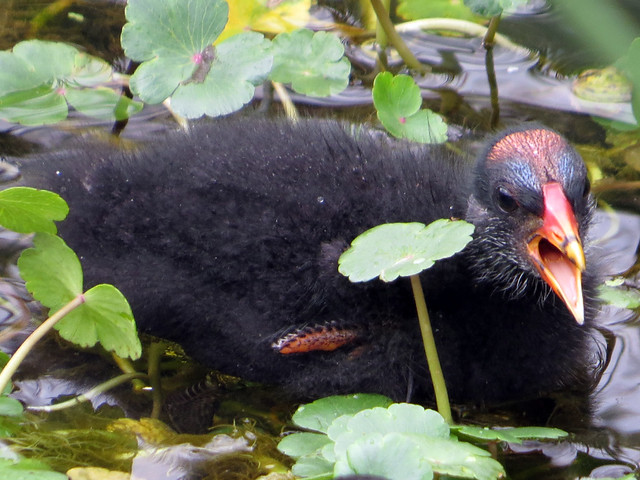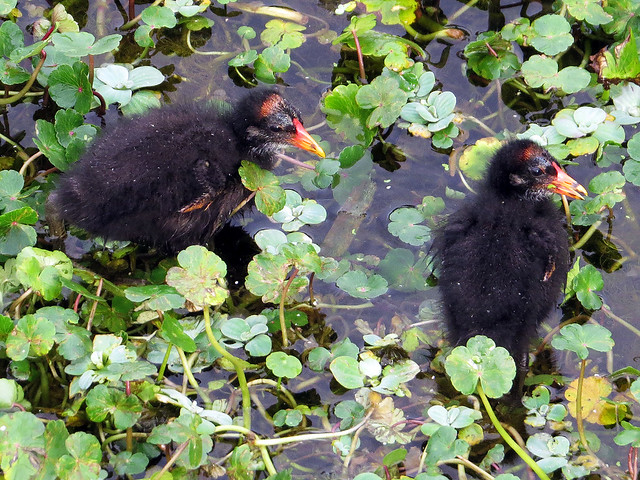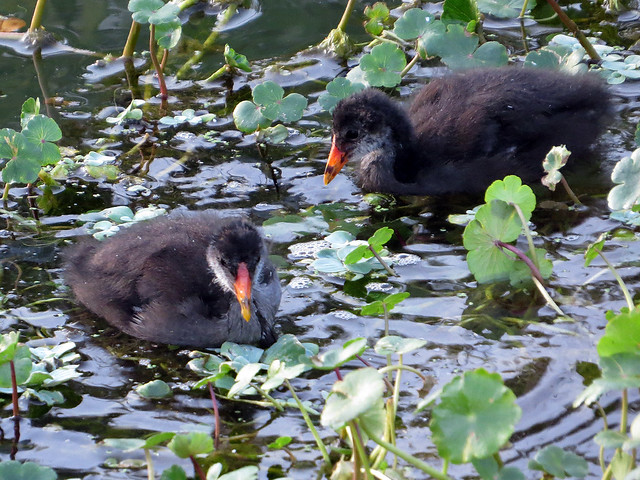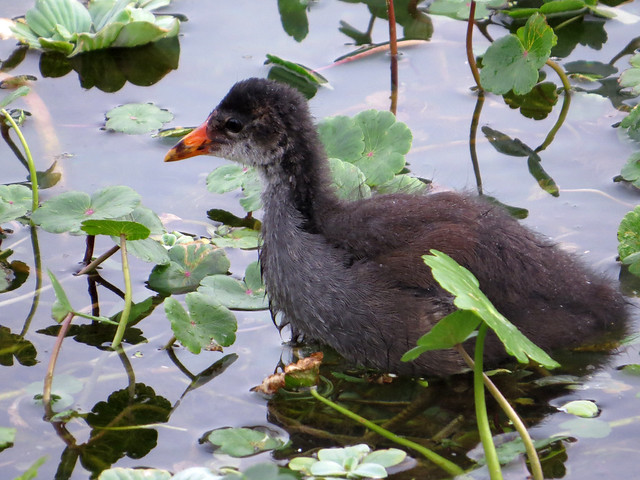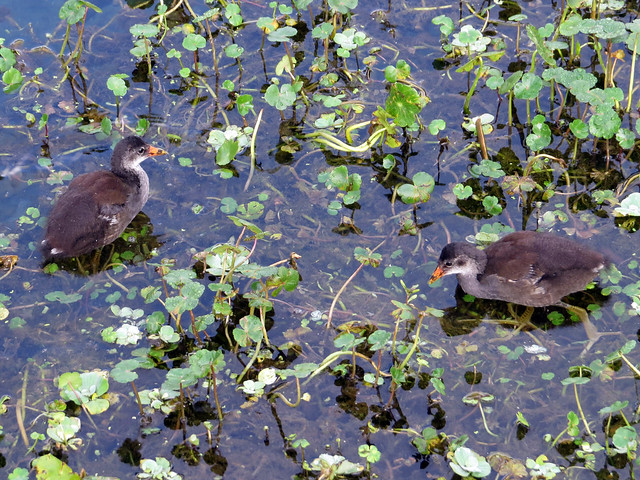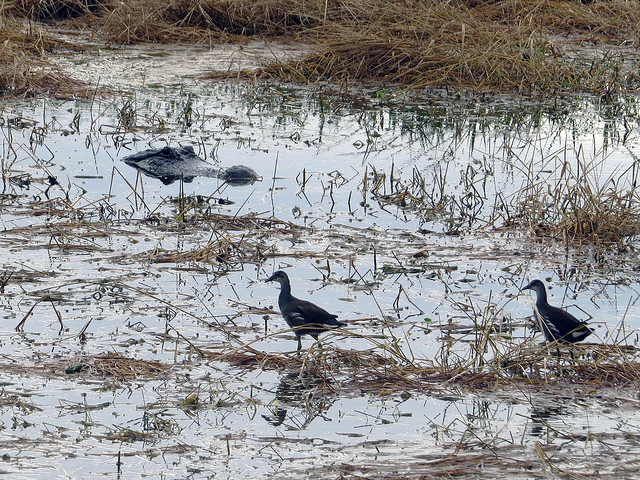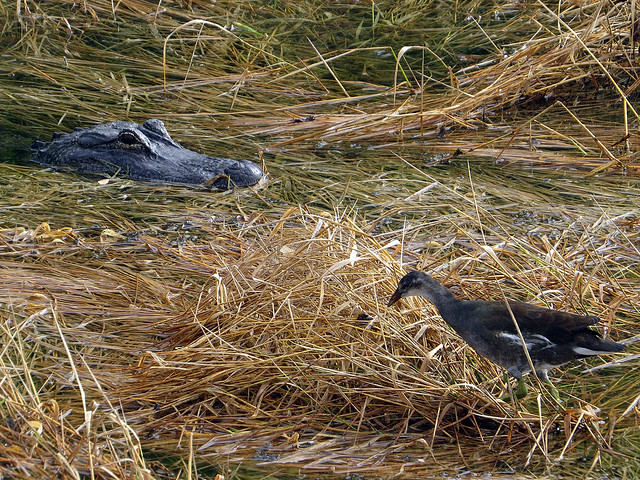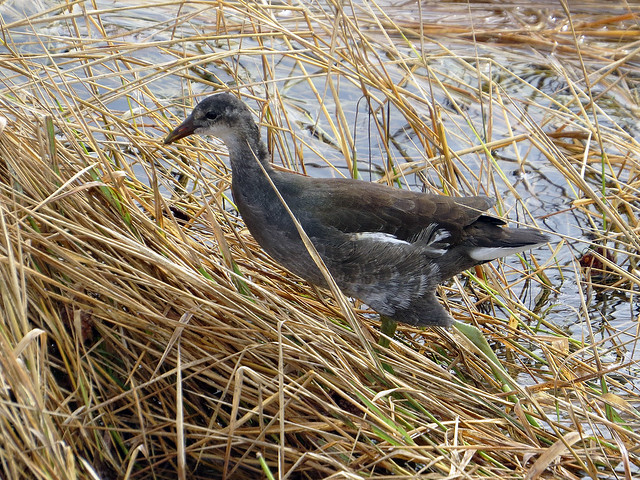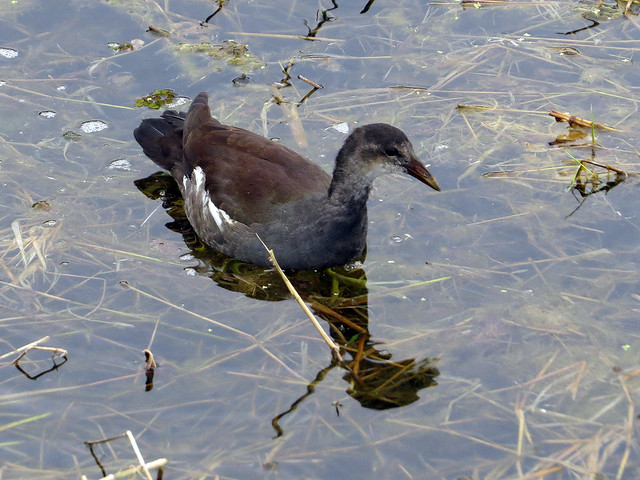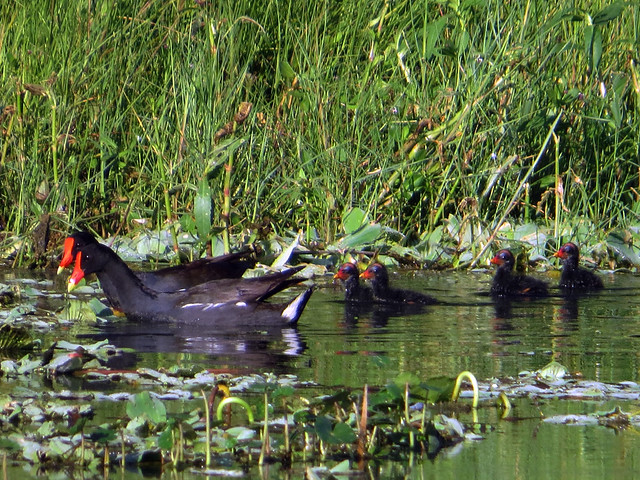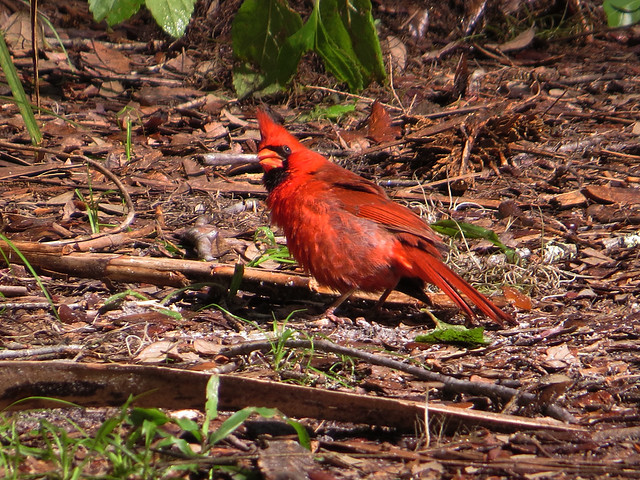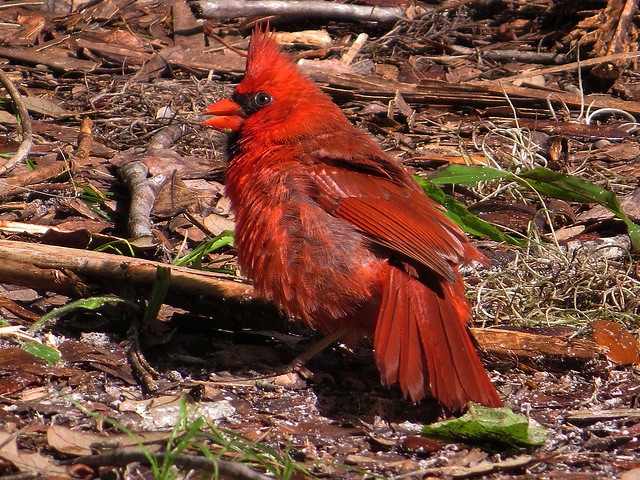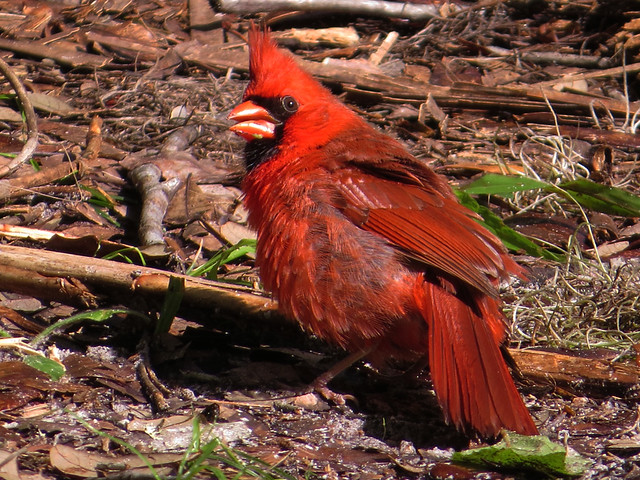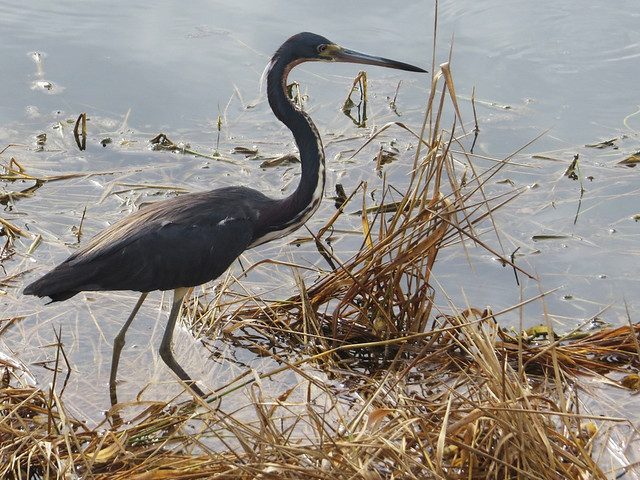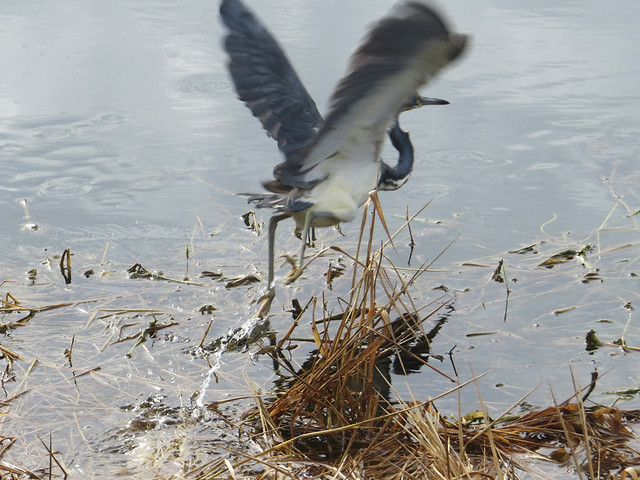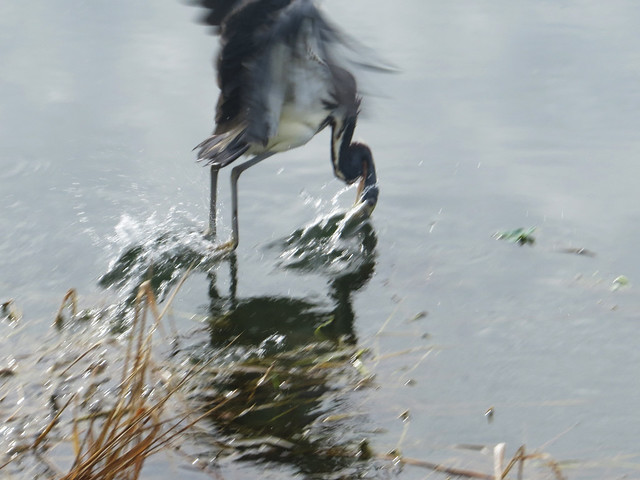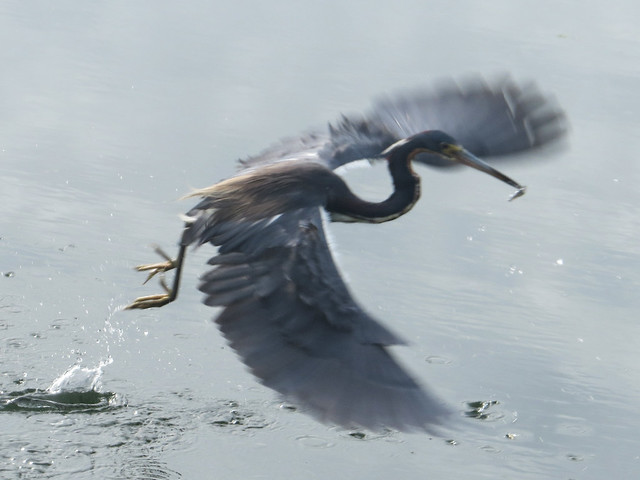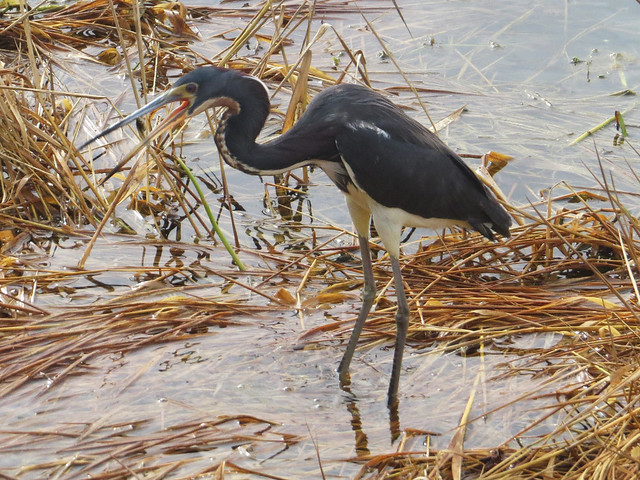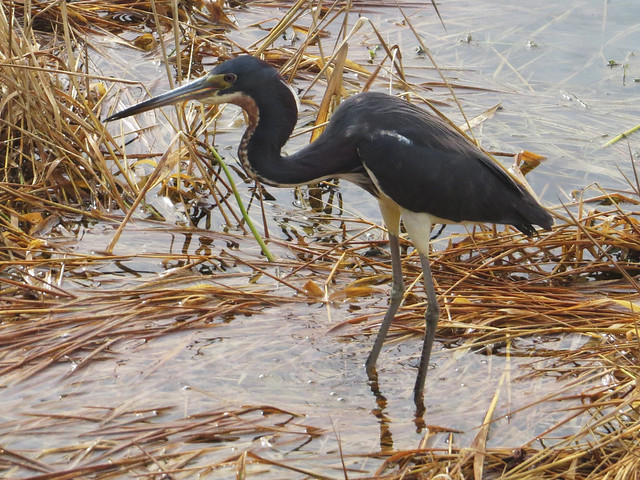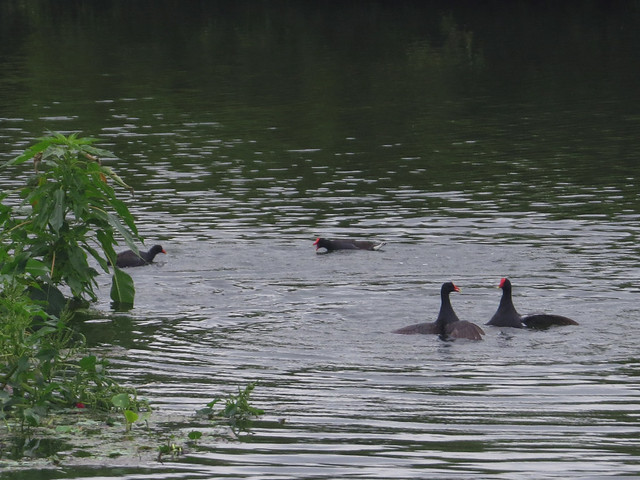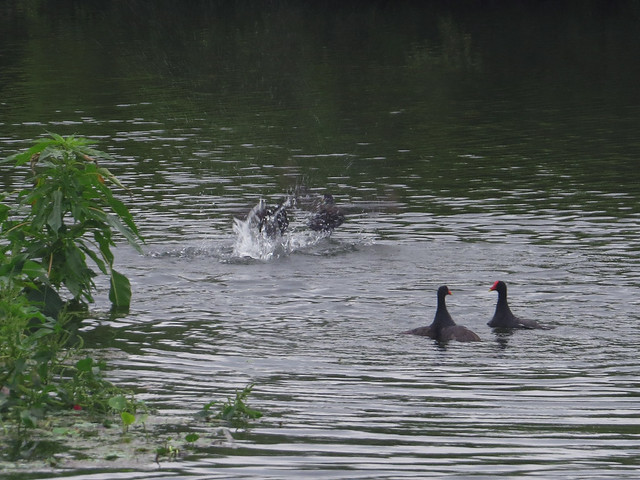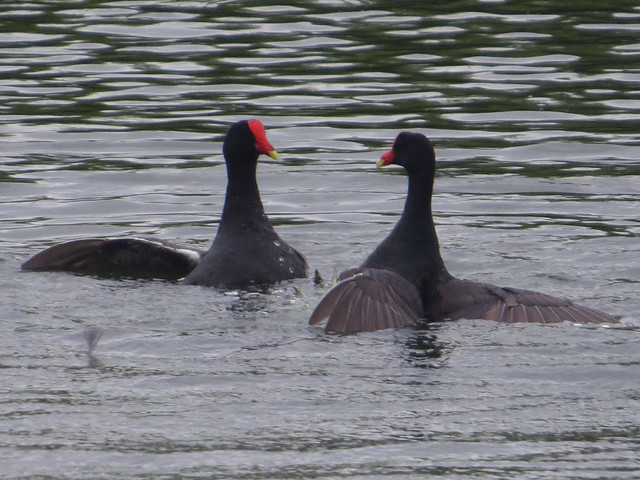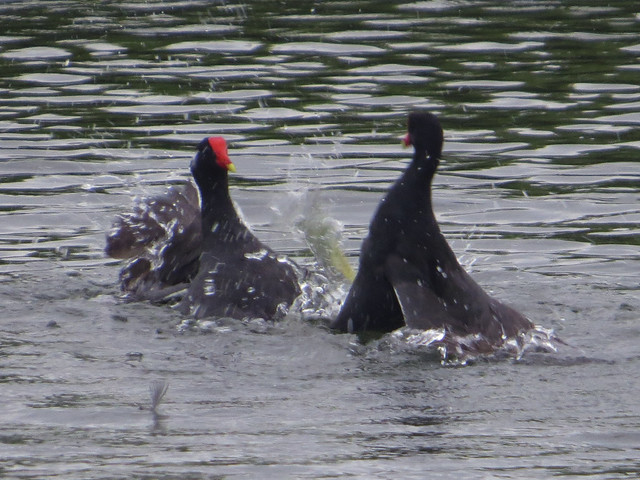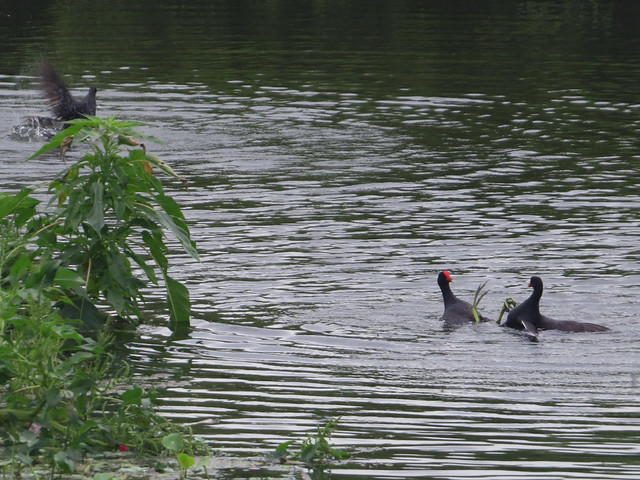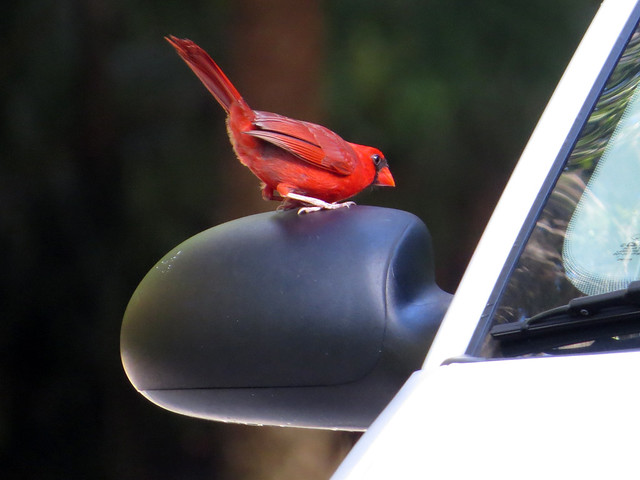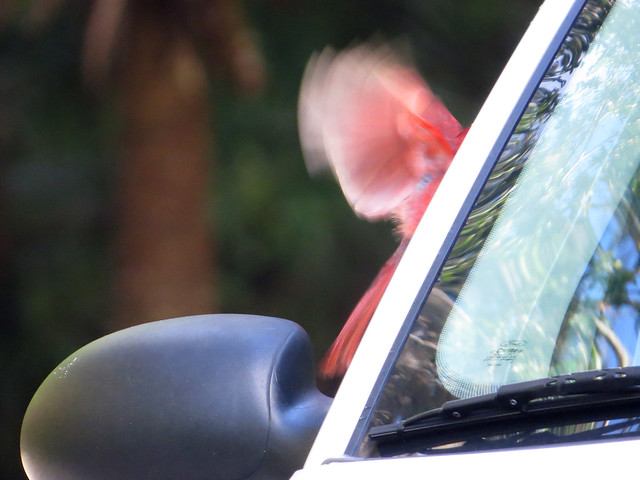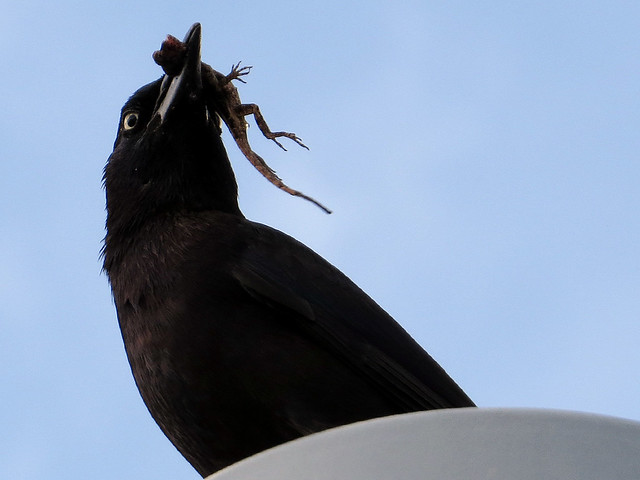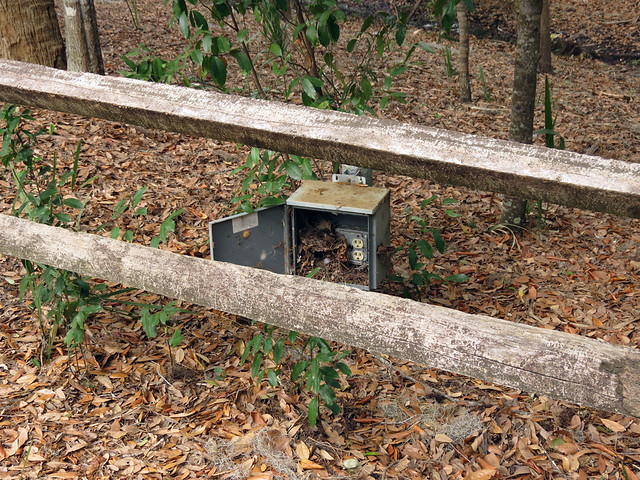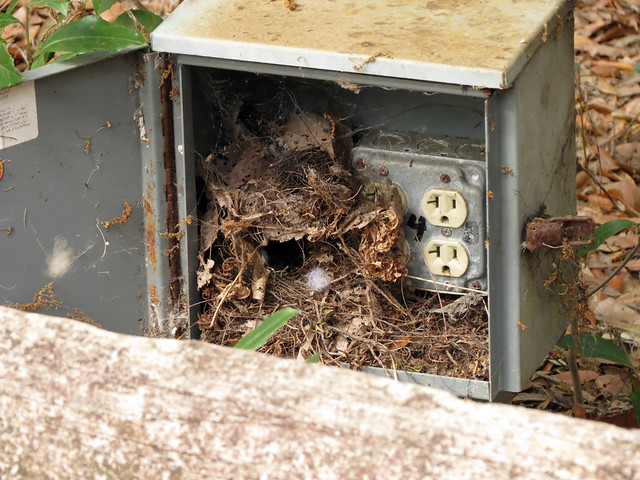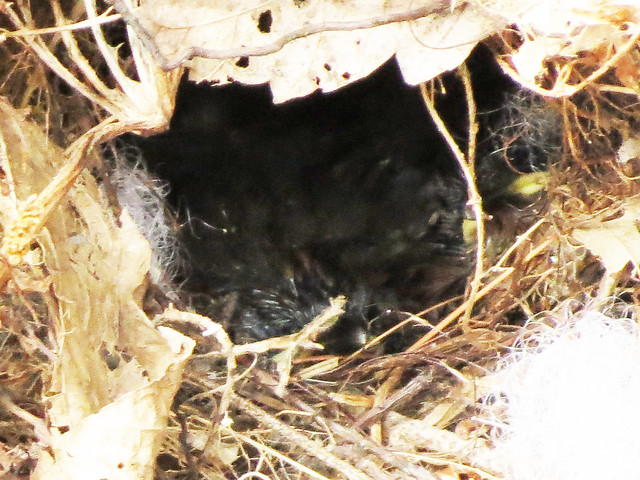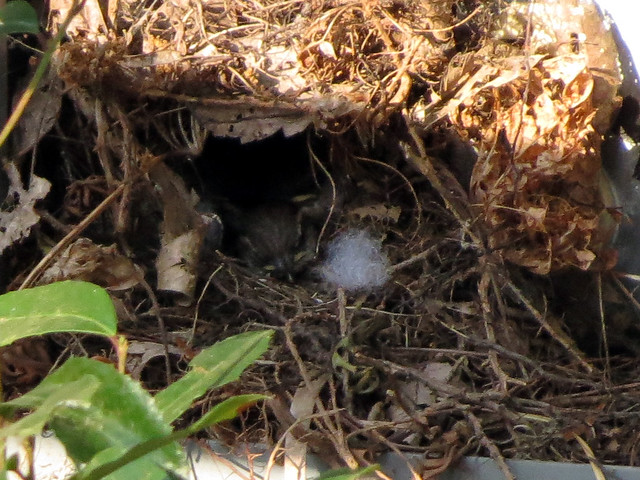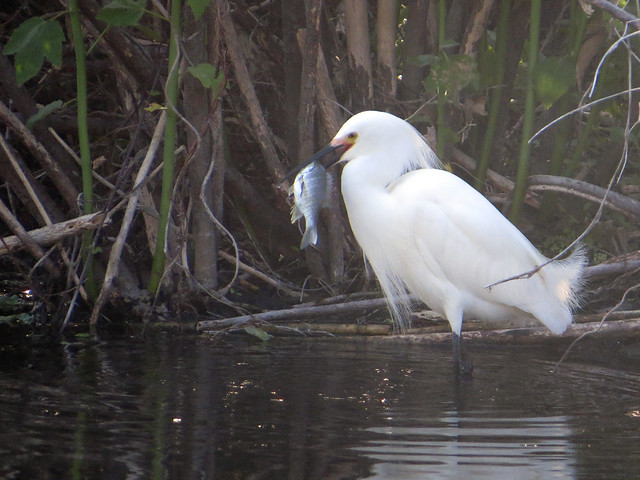Osprey nests are very common here in central Florida, especially on utility structures. I wanted to monitor a nest or two for the citizen science project Osprey Watch this year, so when I noticed Ospreys visiting an existing nest that I pass by on my bike a few times a week, I took note. Unfortunately the sun is always behind this site from the bike path, so photos are usually lousy.
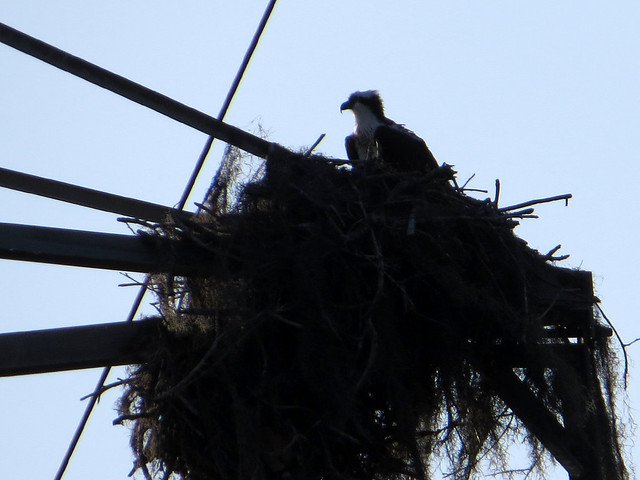
Adult(s) visit nest site early in the season, 29 January 2013
In the following weeks I saw adult birds bringing material to the nest, or visiting the nest or structure, but I didn’t really stop to watch them as it didn’t appear that anyone was sitting on eggs yet.
Then sometime last month I noticed a Red-tailed Hawk perched on the utility structure, not far from the nest. I wondered if the Ospreys had abandoned the nest site. Unfortunately I didn’t document this sighting or any that followed, being distracted with a pending house move among other things.
Finally on March 9th, at the end of a late afternoon ride, I stopped to look at the site again. I saw a Red-tailed Hawk that appeared to be sitting inside the nest.
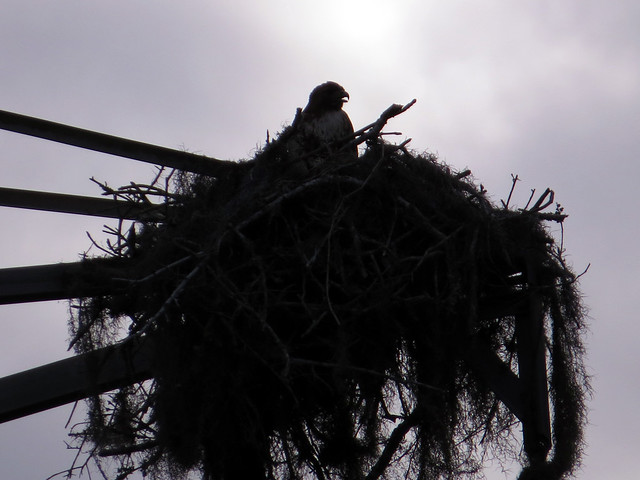
Red-tailed Hawk on Osprey nest, 9 March 2013
This morning there was a bit of raptor drama at the nest site and nearby. First, as I approached the utility lines I was thrilled to see a pair of Bald Eagles fly over the road in front of me. They flew at a leisurely pace, but were soon followed by a Red-shouldered Hawk who was screaming bloody murder. The eagles continued on their way, but not before showing some aggression towards each other with some flipped-over talon waving.
As I biked by the Osprey nest, less than a block away, I heard a Red-tailed Hawk keering. I stopped to look at the nest and saw a hawk perched on the structure, and an Osprey approaching the nest. Wow! I guess the Ospreys didn’t give up after all? The hawk took flight and then suddenly a second Red-tailed Hawk came out of the woods and gave the Osprey chase! The Osprey banked and went after one of the flying hawks. The raptors chased each other around for about 45 seconds before the Osprey and one of the hawks disappeared over the woods and out of my view. The other Red-tailed Hawk returned to the structure.
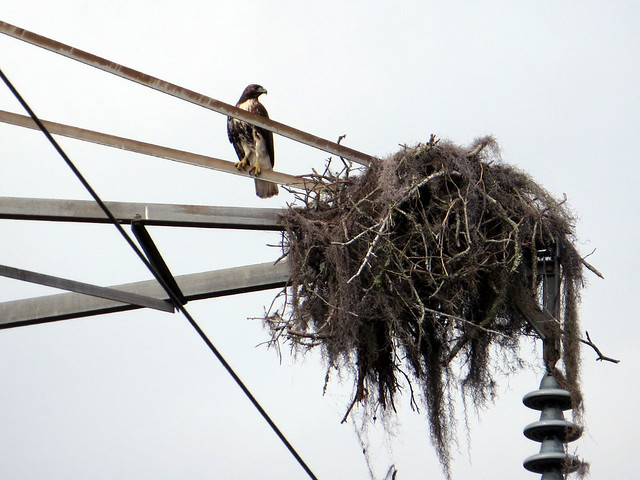
Red-tailed Hawk at Osprey nest, 18 March 2013
Both species would be expected to be deep into breeding season now, and either could already be sitting on eggs, so I really wonder what is going on at this nest site. I also think it is a bit unusual for a Red-tailed Hawk to nest in such an open area, in a nest not self-made.
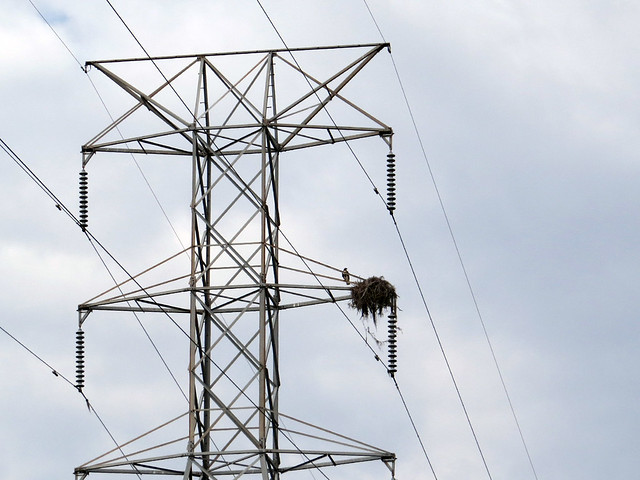
Red-tailed Hawk at Osprey nest, 18 March 2013
I love all the raptors I get to see here on a regular basis. In fact, the above encounters were not even the best raptor sightings I had this morning! How’s that for a teaser for a future blog post?! Anyway, if you love raptors too, you should be following the Crossley ID Blog Tour, a celebration of raptors. The blog tour is for the upcoming publication of The Crossley ID Guide: Raptors. Be sure to check out the post this Wednesday on sister blog MagnificentFrigatebird.com!

Share the birds, share the love!




